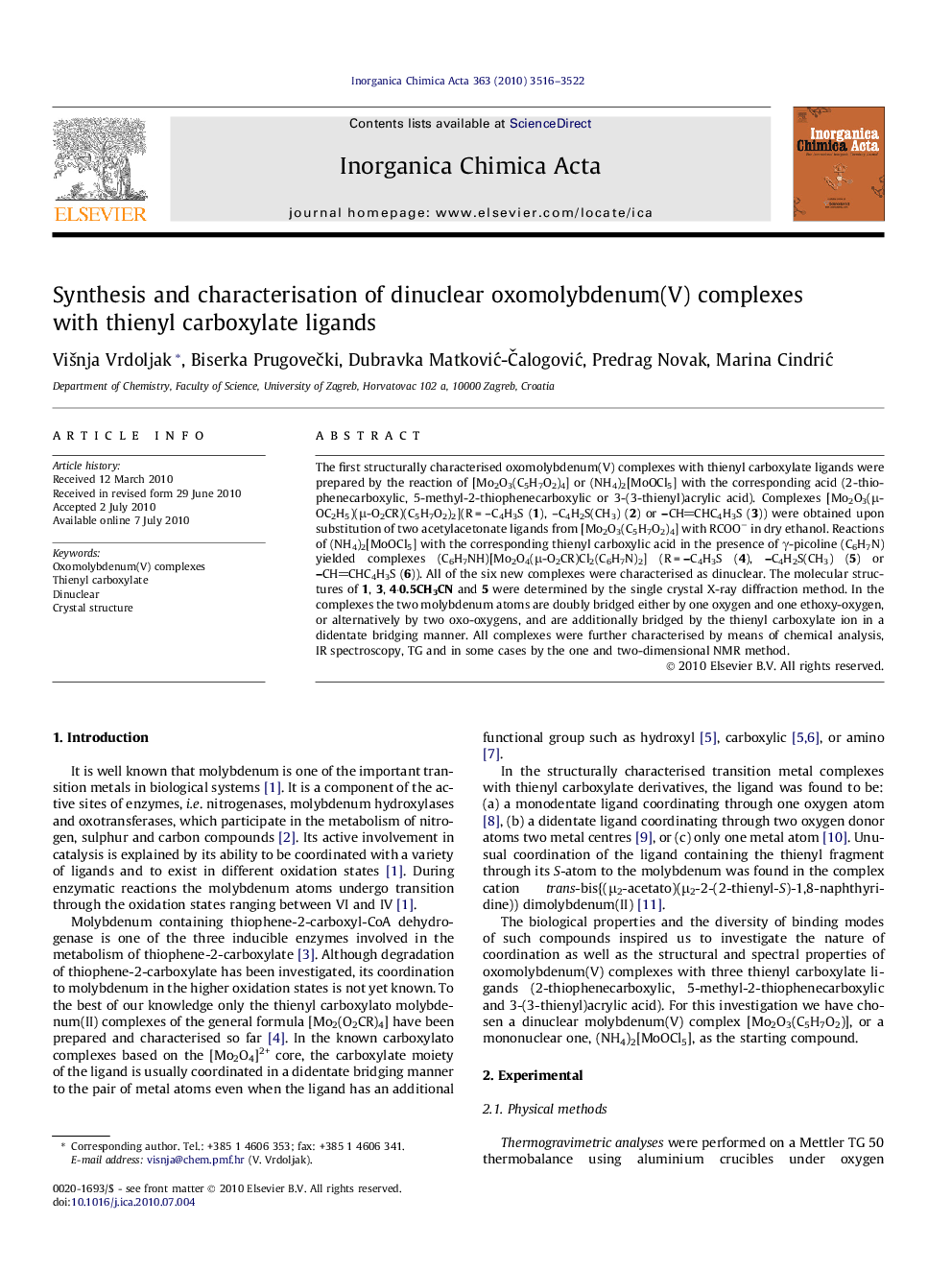| Article ID | Journal | Published Year | Pages | File Type |
|---|---|---|---|---|
| 1311201 | Inorganica Chimica Acta | 2010 | 7 Pages |
The first structurally characterised oxomolybdenum(V) complexes with thienyl carboxylate ligands were prepared by the reaction of [Mo2O3(C5H7O2)4] or (NH4)2[MoOCl5] with the corresponding acid (2-thiophenecarboxylic, 5-methyl-2-thiophenecarboxylic or 3-(3-thienyl)acrylic acid). Complexes [Mo2O3(μ-OC2H5)(μ-O2CR)(C5H7O2)2](R = –C4H3S (1), –C4H2S(CH3) (2) or –CHCHC4H3S (3)) were obtained upon substitution of two acetylacetonate ligands from [Mo2O3(C5H7O2)4] with RCOO− in dry ethanol. Reactions of (NH4)2[MoOCl5] with the corresponding thienyl carboxylic acid in the presence of γ-picoline (C6H7N) yielded complexes (C6H7NH)[Mo2O4(μ-O2CR)Cl2(C6H7N)2] (R = –C4H3S (4), –C4H2S(CH3) (5) or –CHCHC4H3S (6)). All of the six new complexes were characterised as dinuclear. The molecular structures of 1, 3, 4·0.5CH3CN and 5 were determined by the single crystal X-ray diffraction method. In the complexes the two molybdenum atoms are doubly bridged either by one oxygen and one ethoxy-oxygen, or alternatively by two oxo-oxygens, and are additionally bridged by the thienyl carboxylate ion in a didentate bridging manner. All complexes were further characterised by means of chemical analysis, IR spectroscopy, TG and in some cases by the one and two-dimensional NMR method.
Graphical abstractSynthesis and characterisation of oxomolybdenum(V) complexes with thienyl carboxylate ligands (2-thiophenecarboxylic, 5-methyl-2-thiophenecarboxylic or 3-(3-thienyl)acrylic) are described. In the complexes the two molybdenum atoms are doubly bridged either by one oxygen and one ethoxy-oxygen, or alternatively by two oxo-oxygens, and are additionally bridged by the thienyl carboxylate ion in a didentate bridging manner.Figure optionsDownload full-size imageDownload as PowerPoint slide
